Contained list
Contained lists group content that is similar or related and can contain read-only or interactive information.
Overview
Contained lists are commonly used inside of containers like cards, sidebars, and disclosure situations. These lists have one header column of information with multiple list item rows. Contained lists help you organize related content within smaller spaces within a user interface and allow you to include inline actions and interactive elements.
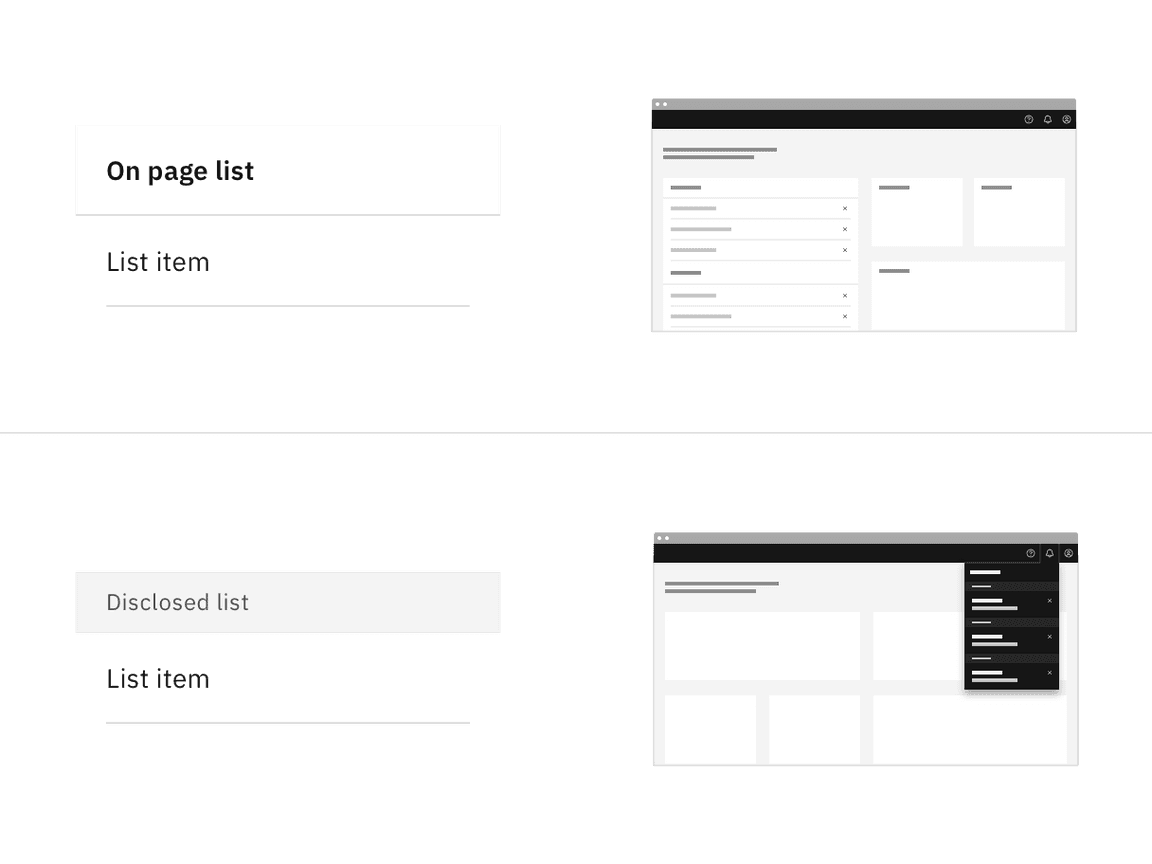
When to use
- Use on a page inside of small spaces or in disclosure situations.
- Use when including interactive elements or inline actions in a list.
- To logically group items that follow the same content structure.
When not to use
- Do not use if the list content needs to be nested more than one level deep and becomes overly complex and lengthy. For these situations, use the data table component instead.
- Do not use if the list needs to contain multiple column headers, instead use the structured list component.
Variants
| Variant | Purpose |
|---|---|
| On page list | Use this variant when placing the list in a persistent context like the main area in the user interface, such as on a card or in a sidebar. |
| Disclosed list | Use this variant when the list is shown within a temporary context, for example within a popover or layer that is elevated by a drop shadow or border. |
Live demo
<div style={{ width: '75%' }}><ContainedList label="List title" kind="on-page"><ContainedListItem>List item</ContainedListItem><ContainedListItem>List item</ContainedListItem><ContainedListItem>List item</ContainedListItem><ContainedListItem>List item</ContainedListItem></ContainedList></div>
Formatting
Anatomy
Contained lists are made up of a list header, list title, list item rows, and optional interactive elements.
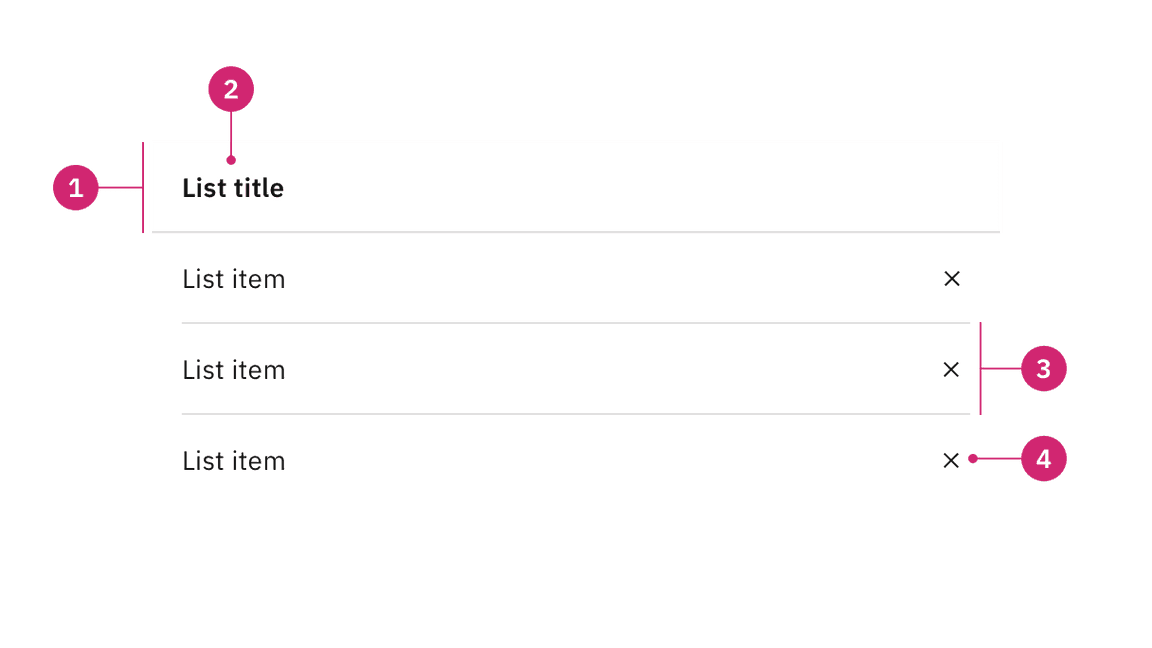
- List header: Area to group the succeeding list items.
- List title: Descriptive name for the group of list items.
- List item: The content with in a list item row.
- Interactive element (optional): An element that you can interact with or treat as an inline action, such as links, icons, and toggles.
Sizing
List header area
The list header height is always fixed. The on page variant style list header has a height of 48px. The disclosed variant style list header has a height of 32px.
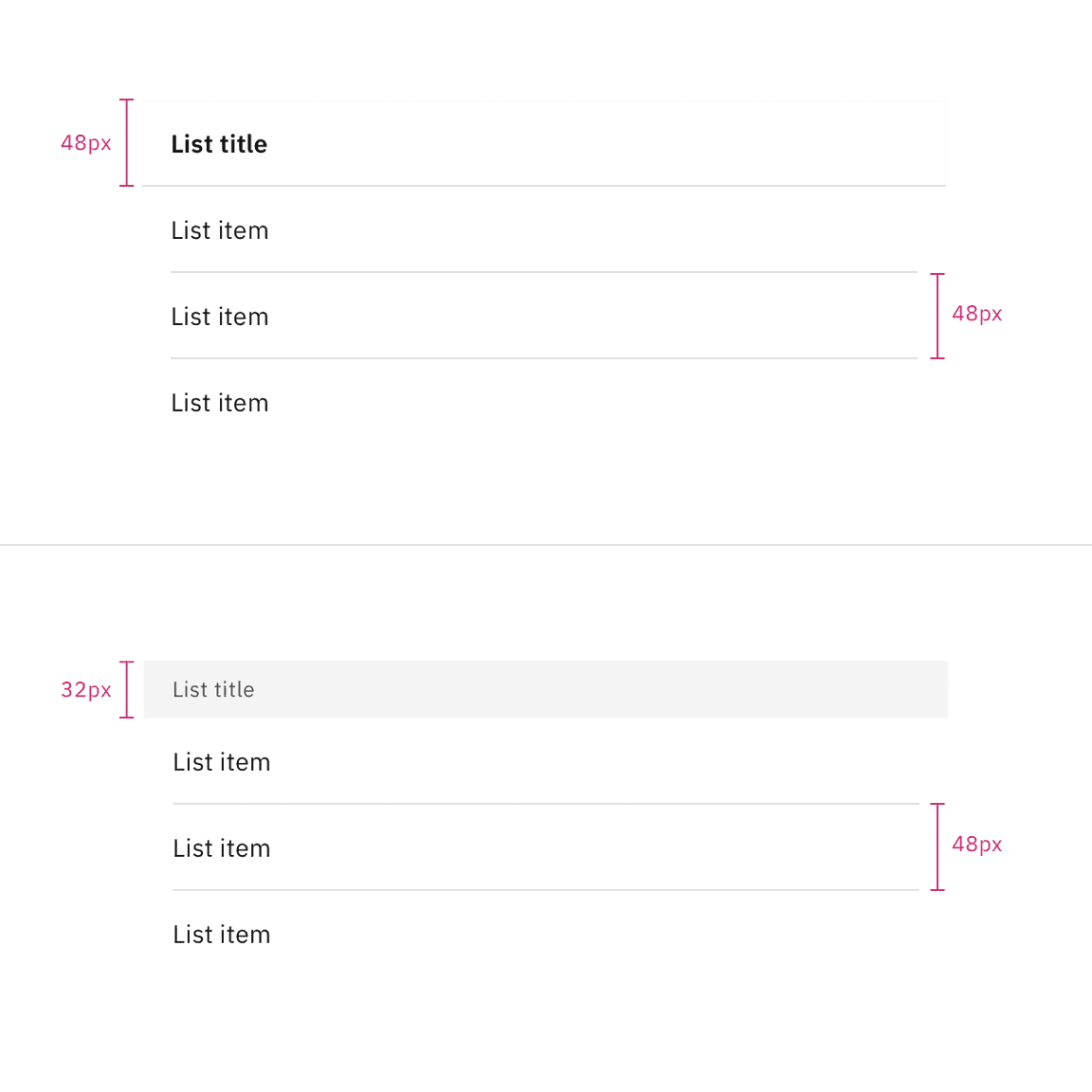
List item row
List item row heights can vary based on the amount of content in each row. The content in each row is flexible. By default, each list item row height is 48px for one line of content.
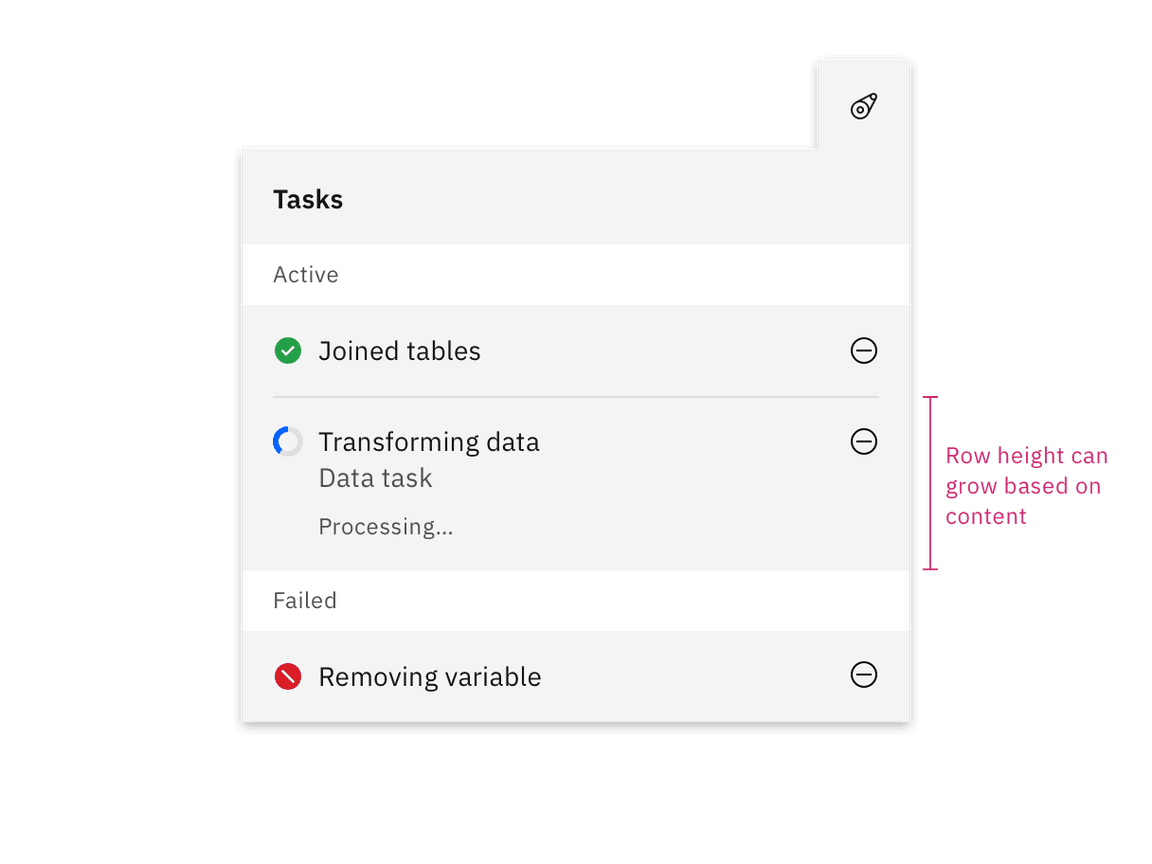
Alignment
Contained lists can have multiple sections and stack on top of each other. When stacking multiple on page lists, there should be 16px padding ($spacing-05) between each list. When stacking multiple disclosed lists, stack them to be flush with 0px padding between each other.
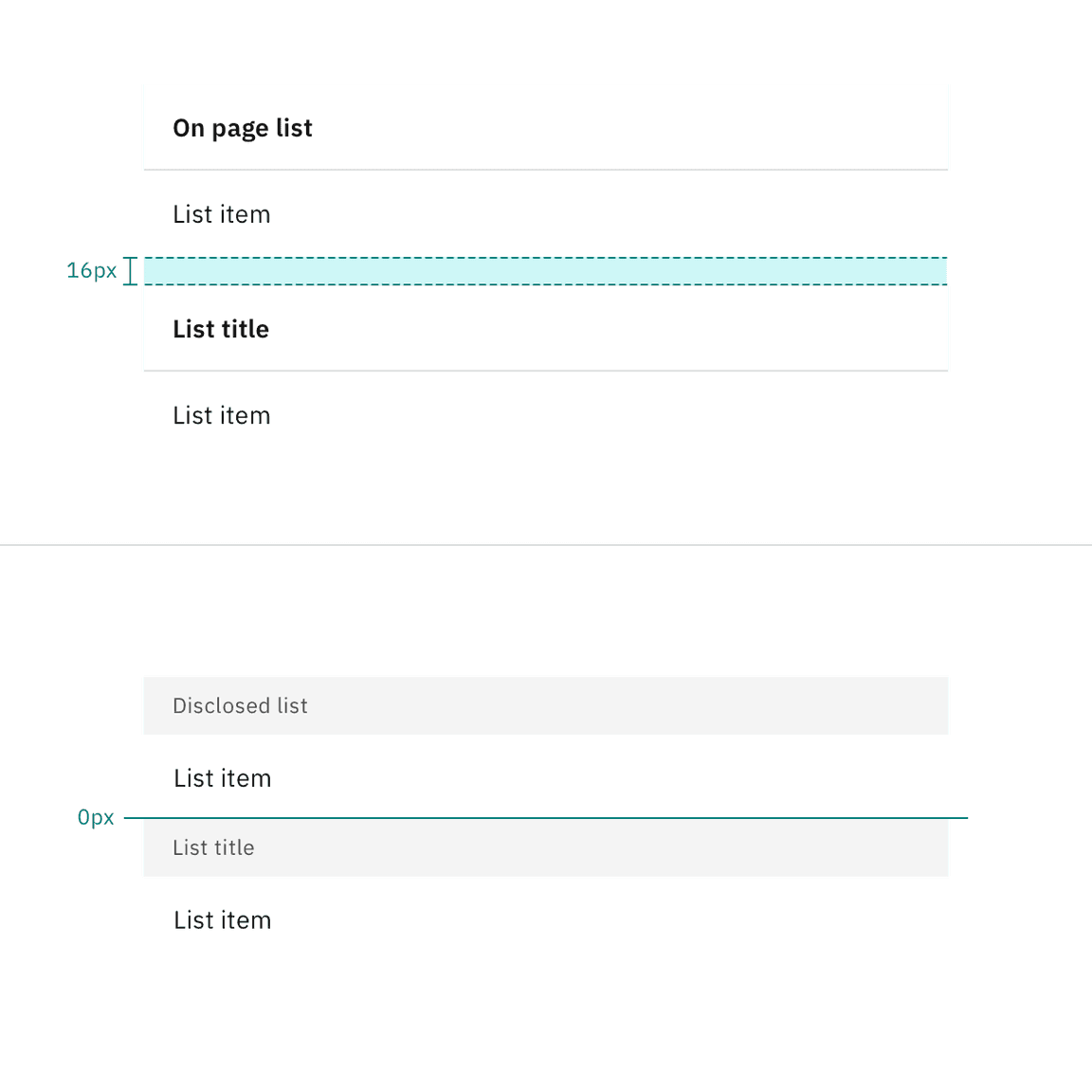
Scrolling
Contained list header areas can be sticky and fixed in place while the list item rows scroll underneath. This functionality is optional depending on the use case.
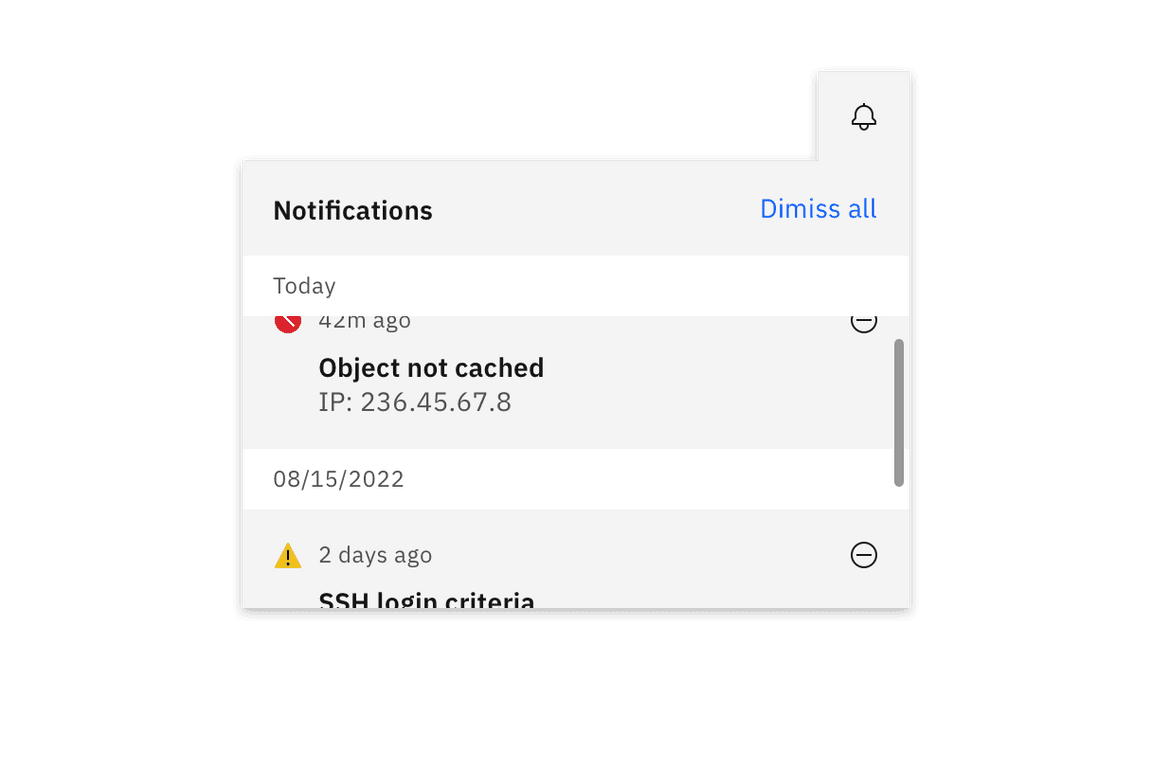
Content
Main elements
List title
- A list title is a descriptive name for the group of list items.
- List titles should be short and clear, ranging from one to three words to describe the list group.
- Use sentence-case capitalization.
List item
- List item text can vary but the structure of the content should be similar per row in the same contained list.
- List item text can have multiple lines of concise content, but should not contain multiple paragraphs of lengthy information.
- Use sentence-case capitalization.
On page list
Use the on page list variant when placing the list on the general page of a user interface. On page lists typically appear in smaller spaces, like in a card or sidebars. The on page list styling has no visible background header with fixed information. If there are scrolling capabitlies, the header will remain sticky and have a background layer to differentiate it from the list item rows scrolling beneath it.
Placement
On page lists should span the entire width of the container they are placed within to make the best use of space and to achieve vertical type alignment with other text and components on the page.
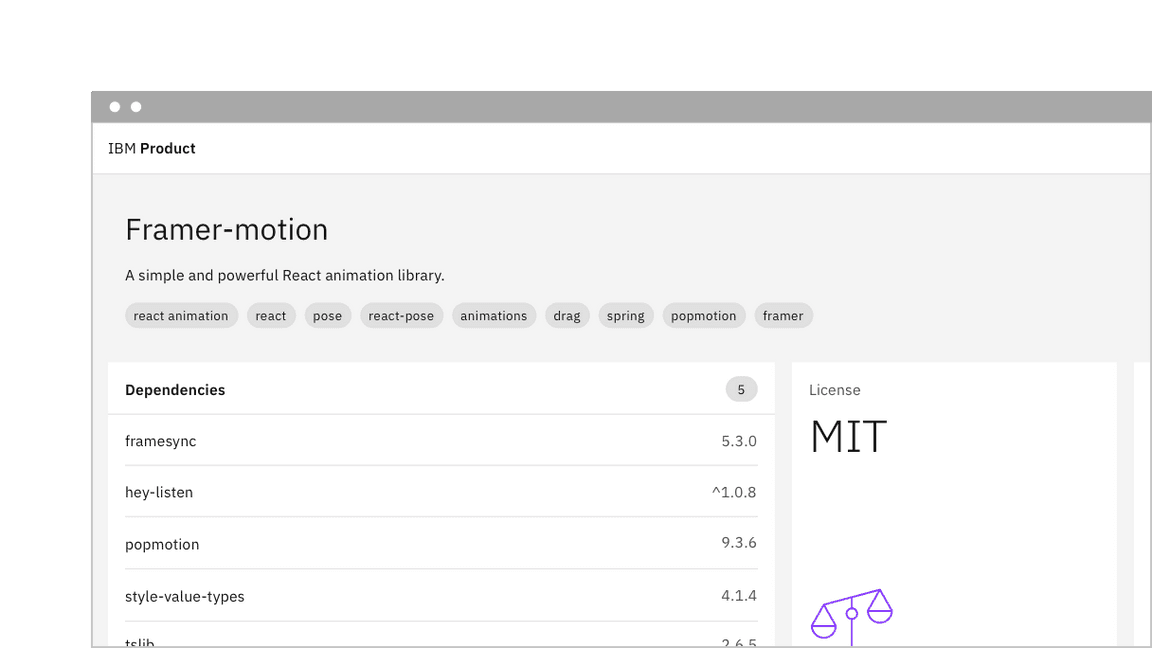
Disclosed list
Use the disclosed list variant when placing the list within a temporary context, like a popover or disclosure, which is typically accompanied by an enclosed border or drop shadow. The disclosed list styling has a background layer underneath the header. Each header has a smaller height than the on page list styling to take up less real estate in the smaller and scrollable spaces it usually appears in.
Placement
Disclosed lists should span the entire width of the container they are placed within to make the best use of space.
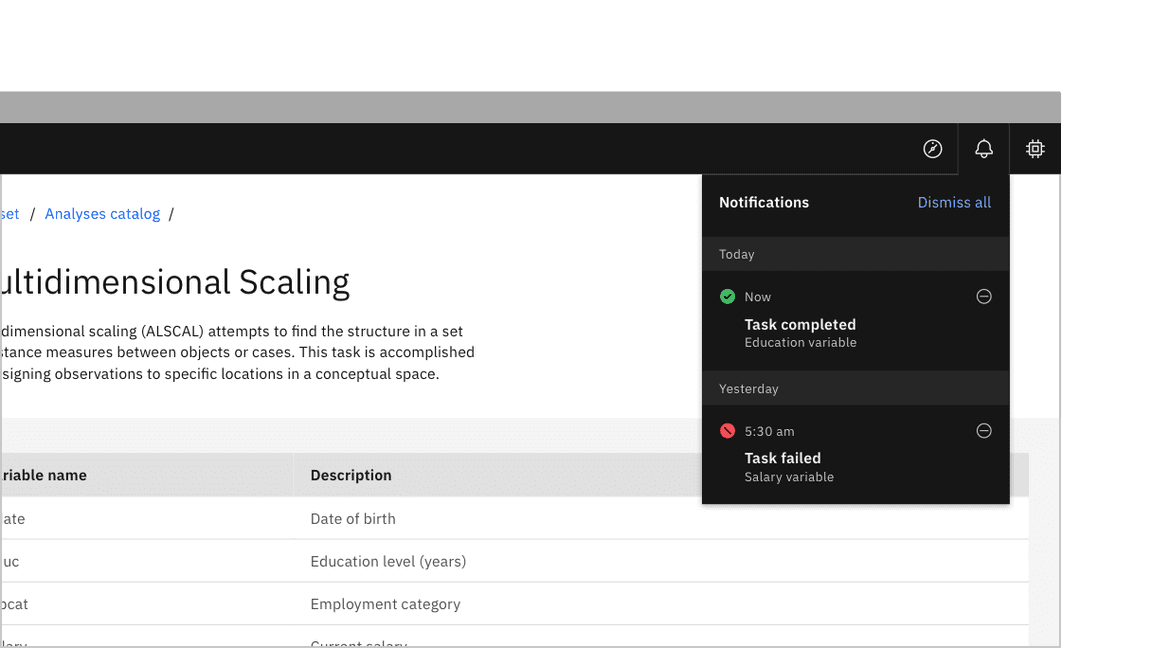
Modifiers
Inline actions
Contained lists can include inline actions, such as closing or dismissing row items in the list.
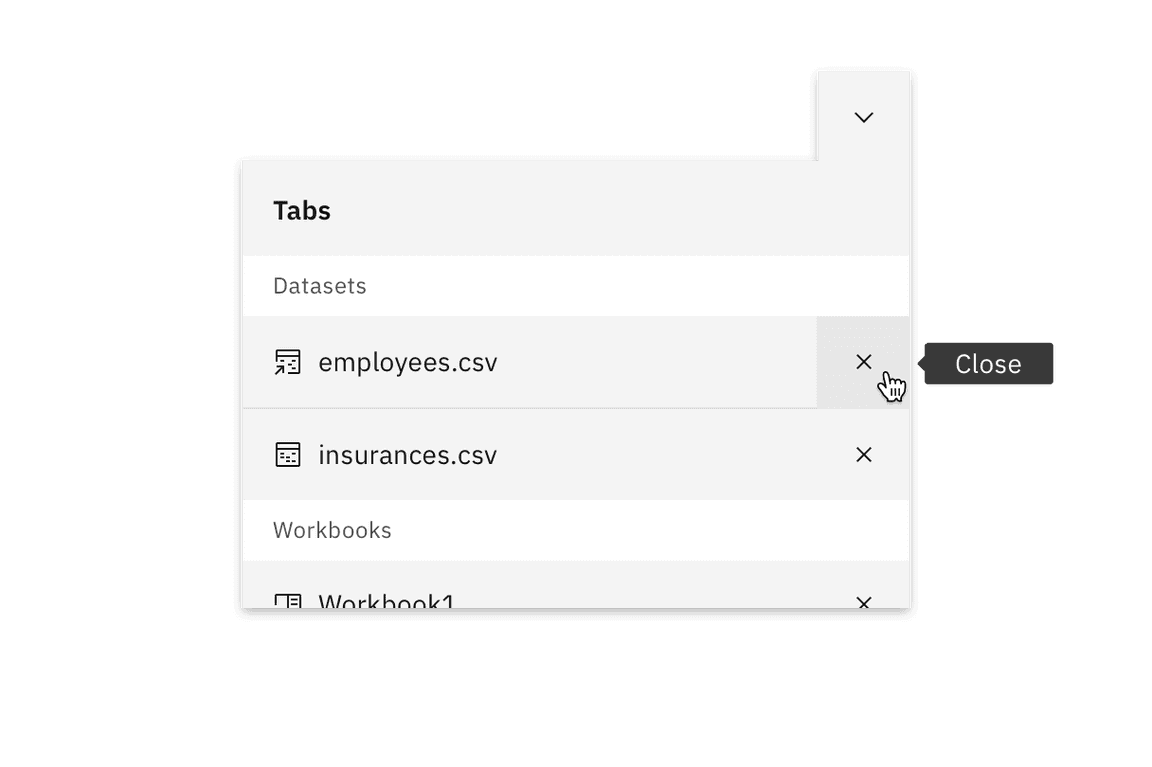
Interactive elements
Contained lists can have interactive elements in headers and rows, such as links, icon buttons, and toggles.
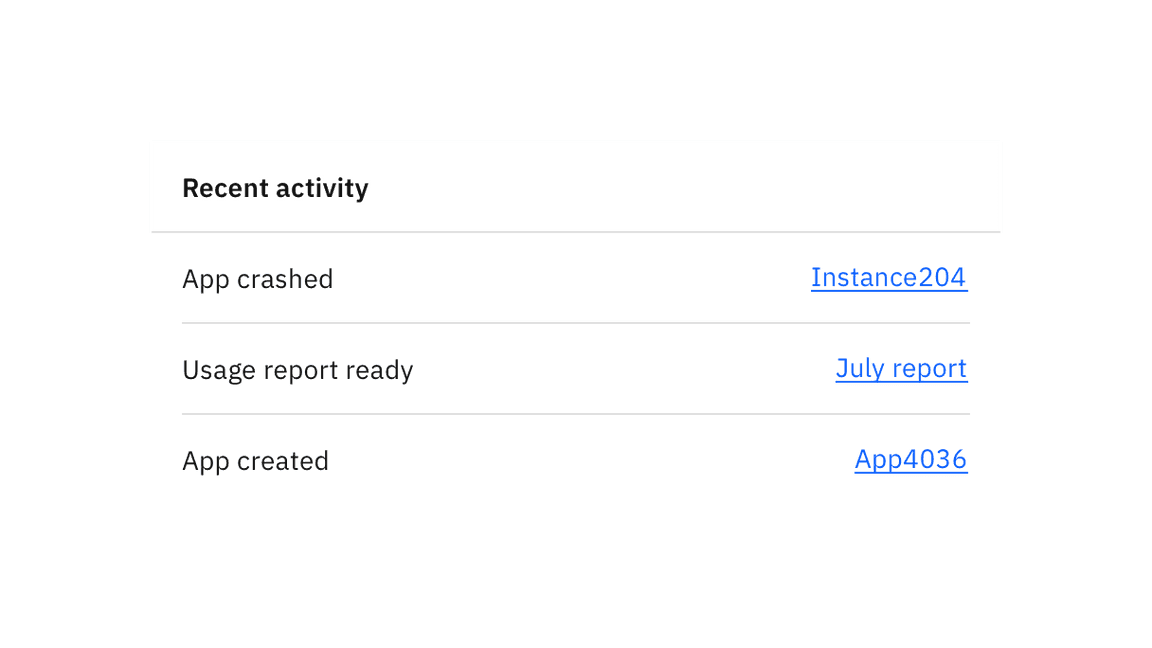
Clickable rows
Contained lists support clickable rows as an optional feature.
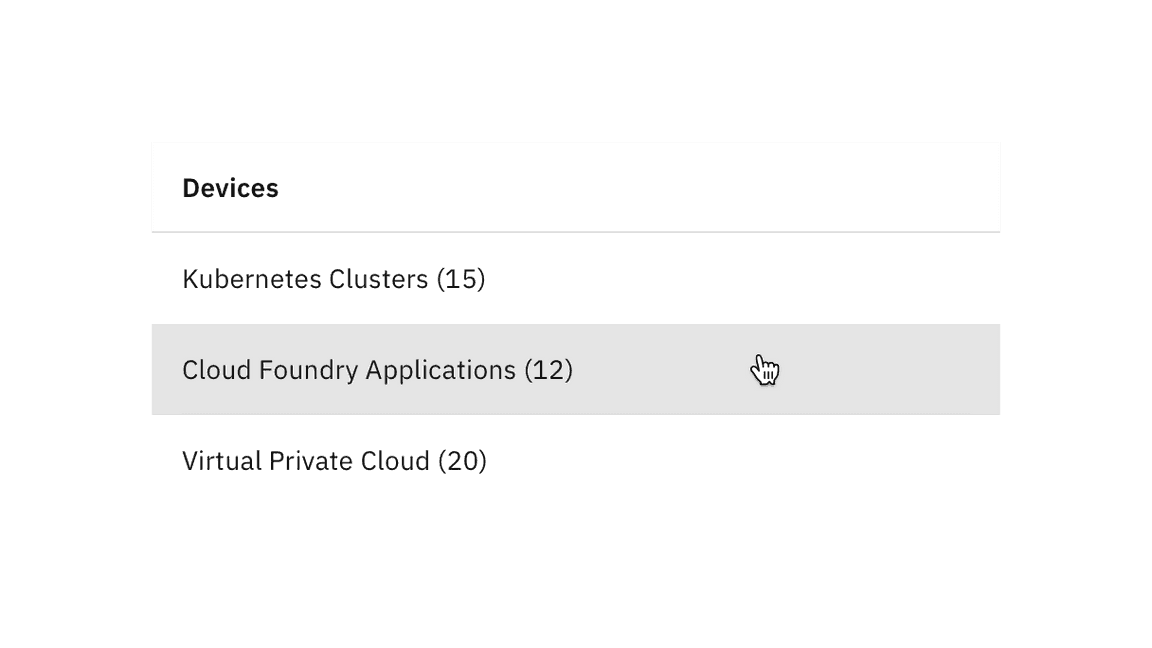
Related
Feedback
Help us improve this component by providing feedback, asking questions, and leaving any other comments on GitHub.